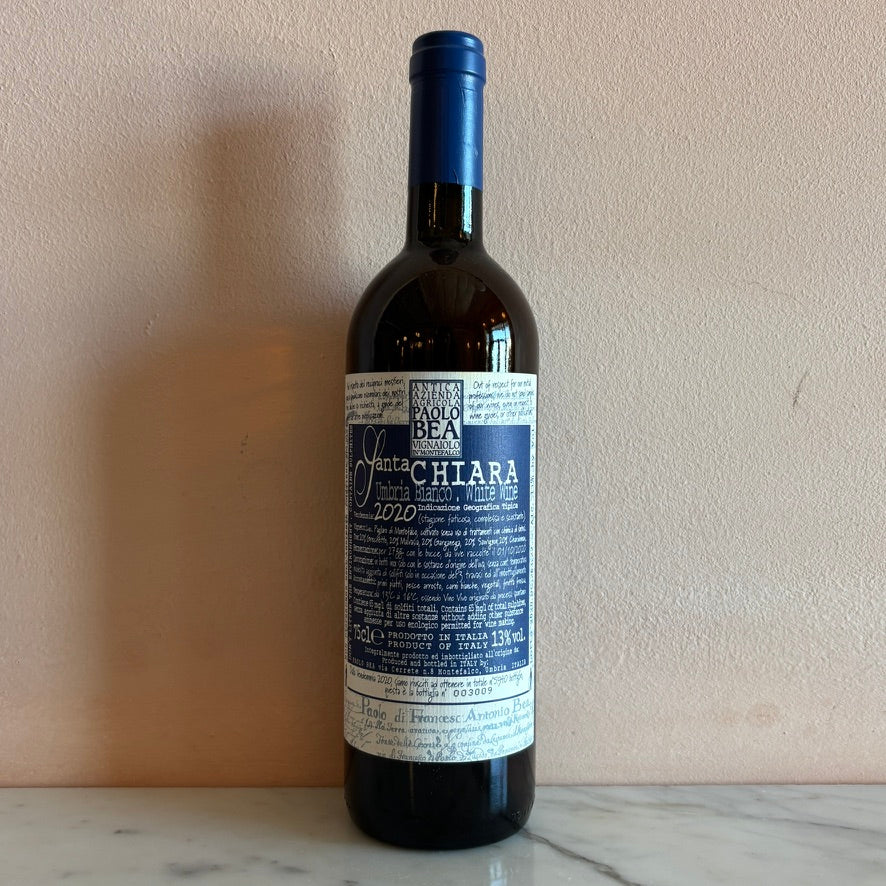Paolo Bea
Paolo Bea "Santa Chiara" Umbria, Italy 2020
Paolo Bea "Santa Chiara" Umbria, Italy 2020
Low stock
Couldn't load pickup availability
FROM ROSENTHAL:
THE WINE: A white wine produced from Grechetto, Malvasia, Chardonnay, Sauvignon and Garganega, in approximately equal proportions, planted in the Pagliaro vineyard, a site with alternating layers of gravel and clay at 1,300 feet above sea level with both east and southwest facing parcels. After crushing, the juice spends at least two weeks macerating on its lees; sulfur is never added. Fermentation occurs in small stainless steel vats at low temperatures. Two rackings are done early in the fermentation process to remove the heavy deposits and a third is done after three weeks. This wine is then left on the fine lees in stainless steel for one year before being bottled. Approximately 4,500 bottles of wine are produced annually.
THE PRODUCER: References in the archives of Montefalco, the beautiful hill town in Umbria, document the presence of the Bea family in this locality as early as 1500. Azienda Agricola Paolo Bea is a classic Italian fattoria, producing wine, raising farm animals for trade and home consumption, and working the land to produce olives, fruits, and vegetables. At the time Neal began working with the family in the late 1980s, a young and ambitious Giampiero Bea was learning the ropes alongside his father Paolo—a through-and-through farmer with an Umbrian dialect so thick as to be nearly incomprehensible to outsiders. Paolo produced shockingly expressive wines using a bare minimum of technology, and while these staunchly old-school wines were out of step with the modernization-happy Italian trends of the 1980s and 1990s, they resonated deeply with Neal and with our clients—and they continue to do so decades later. Giampiero has long been at the helm of Azienda Agricola Paolo Bea, and his commitment to healthy farming and low-intervention cellar work has made him a pillar in the Italian natural wine community. But it is Paolo’s approach—so bred-in-bone as to seem instinctual—that guides the estate to this day, given voice and definition through Giampiero’s remarkable work. The entire property encompasses 15 hectares: 5 of which are dedicated to the vineyards, 2 to olives, and the remainder to the fruits, vegetables and grains that are grown. Sagrantino is the predominant grape, covering 60% of the vineyard surface. The remaining 40% is planted to Sangiovese and Montepulciano, with a small parcel planted to several white varieties. The vineyards are cultivated organically, all grapes are harvested manually and all wines are bottled without fining or filtration.


